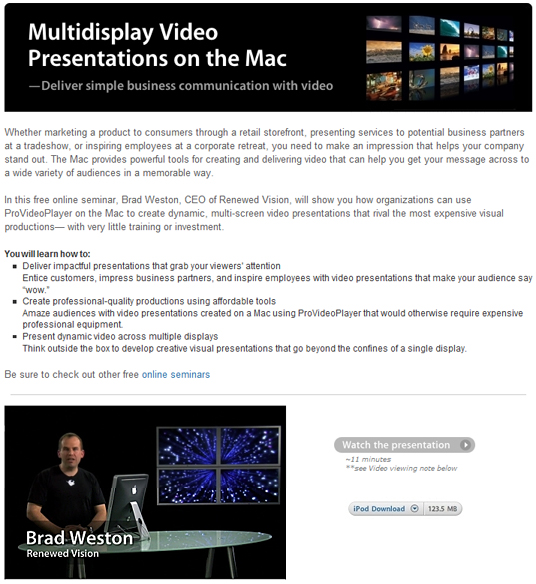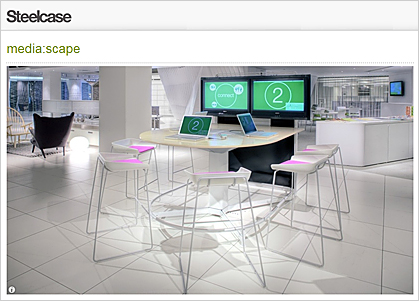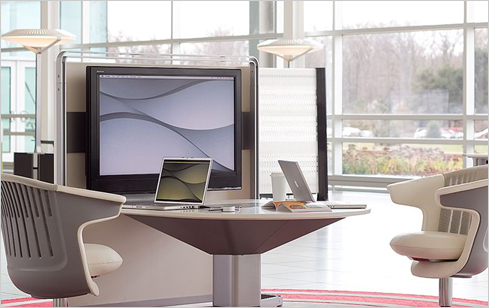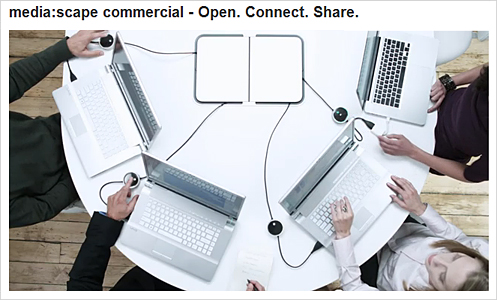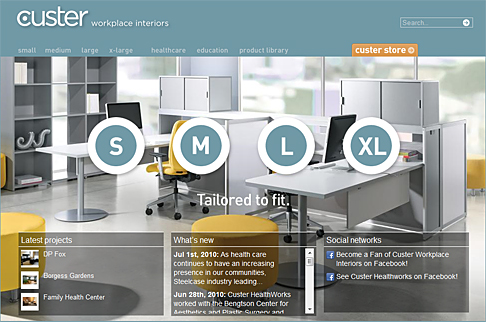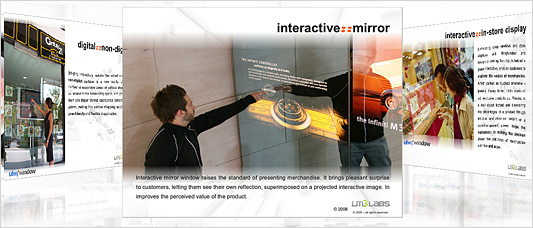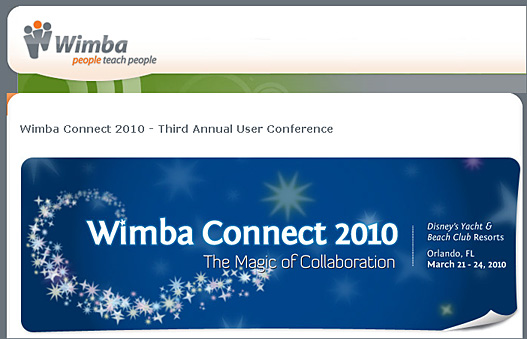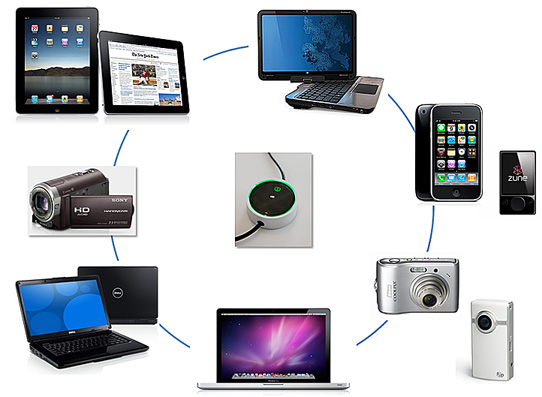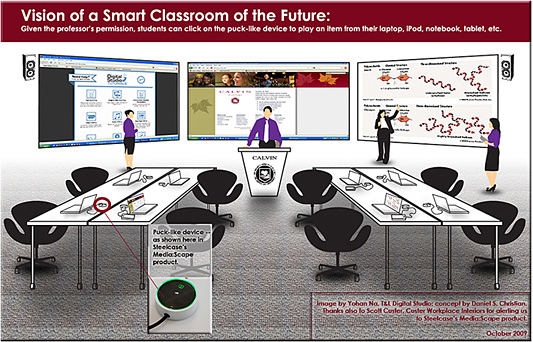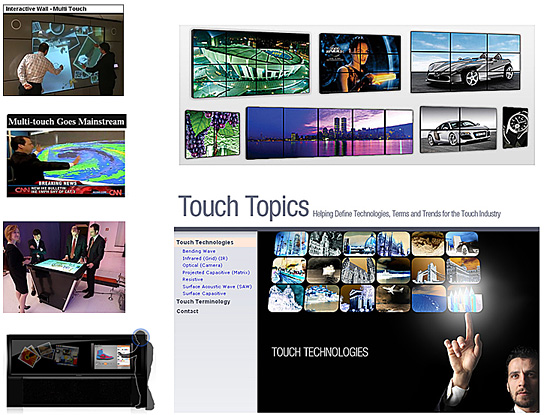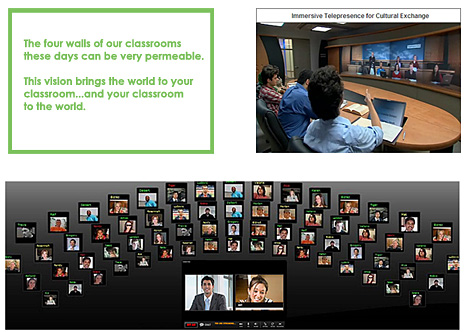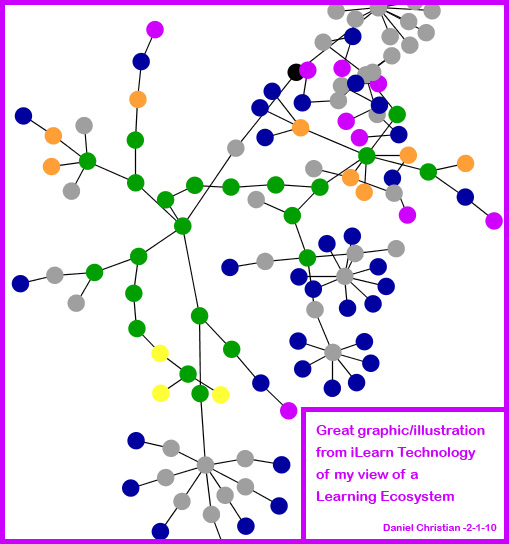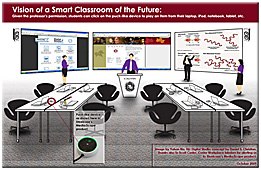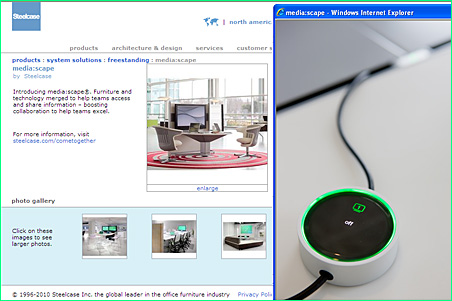How to determine classroom AV requirements: An overview — from CampusTechnology.com by Michael Leiboff
Defining appropriate room characteristics can simplify classroom design and improve the chances of its success as a teaching and learning space.
Tribeca Flashpoint Presents the node Augmented Reality Demo — from blog.flashpointacademy.com
This summer, Steelcase and Tribeca Flashpoint Media Arts Academy collaborated in the research and launch of the node student learning pod.
Turn on your webcam to try the node Augmented Reality demo! http://node.tribecaflashpoint.com

Engineered specifically for today’s collaborative classrooms, the node allows students to move more, store more, and fit more into their learning space.
As part of the launch campaign for the node Classroom Chair, Flashpoint developed this augmented reality tool to illustrate the node’s easy, 30-second, tool-free assembly.
The Next Generation of Digitally Enhanced Learning — from The Journal by Scott Aronowitz
At the recent Ed Tech Summit, a technology consultant took a distant look at the future of education, based on both widespread speculation and technologies currently on the market and in development
In his lecture at the Ed Tech Summit at the InfoComm 2010 conference in Las Vegas, Mark S. Valenti, founder and president of Pittsburgh-based technology consulting firm The Sextant Group, delved into the myriad of ways in which advancing technology will continue to enhance, improve, and expand education–both K-12 and post-secondary education–as well as the shifts in priorities and attitudes such advancements will likely cause.
In Valenti’s “big picture” view of the next stage of education, there will be several significant changes, some of which we are already witnessing, that will alter the entire landscape for “providers” of education and related services, e.g., colleges and universities, vocational and trade institutes, public and private K-12 schools, etc., as well as for teachers and students:
* The process will continue to become more technology-dependent;
* There will be increased demand for access, in terms of user capacity, frequency, transmission speed, and content capacity, leading to increased demand for bandwidth;
* Information will become increasingly media rich, which will also impact bandwidth demand; and
* The individual will increasingly become both a consumer and a producer of information, leading to shifts in the dynamic between educators and the educated.
…
Finally, such technology will lead to a rethinking of the architecture of learning spaces themselves. “Collaboration across time and space will drive facility design [in the coming years]. We’re seeing technologies like Skype become commonplace. We’re seeing major investments from companies like Cisco in things like TelePresence, which is a prime example of cross-collaboration.” Valenti said he believes that, in the long run, in addition to the changes in teaching and learning methods, the physical space that accommodates learning will also change. Classrooms driven by multimedia, virtual hands-on combinations of laboratories and lecture spaces, and the aforementioned virtual operating rooms are all examples of the digitally enhanced learning spaces on the horizon.
A Wimba Classroom-based presentation:
My thoughts re: the smart classroom of the future.
If prompted, click on the participant button, and enter your first name, then click Enter.
Learning Spaces that Facilitate Student Learning — from facultyfocus.com
In the recent online seminar Redesigning Learning Spaces to Improve Teaching and Learning, Saunders discussed the seven factors to consider in teaching and learning space design:
- Institutional climate for teaching and learning change
- Learning outcomes
- Course design
- Student profiles and class size
- Instructional pedagogical skill/training
- Environmental/financial factors
- Technology/furniture









